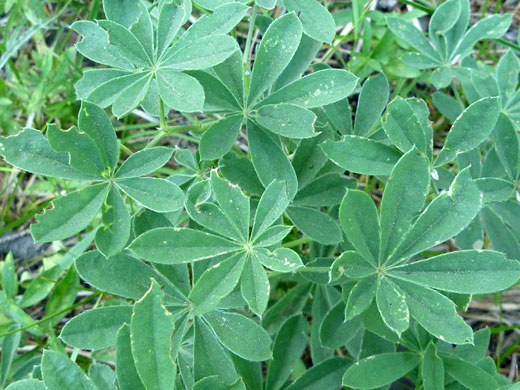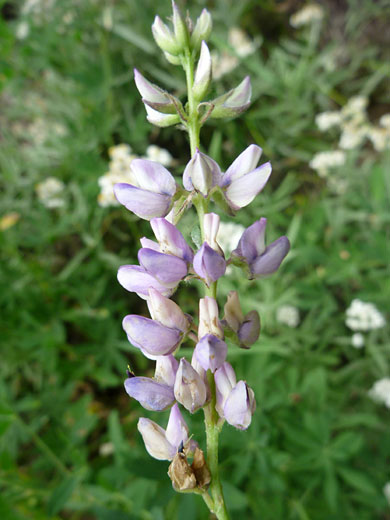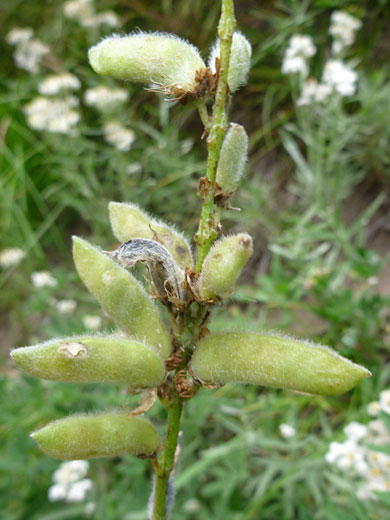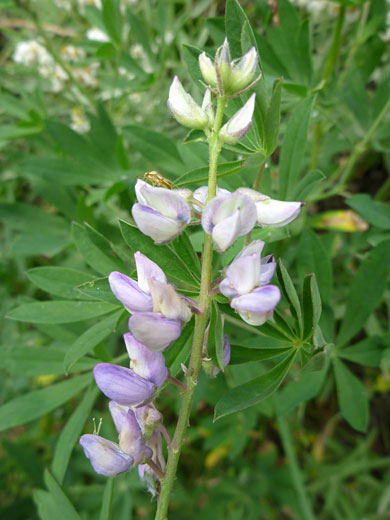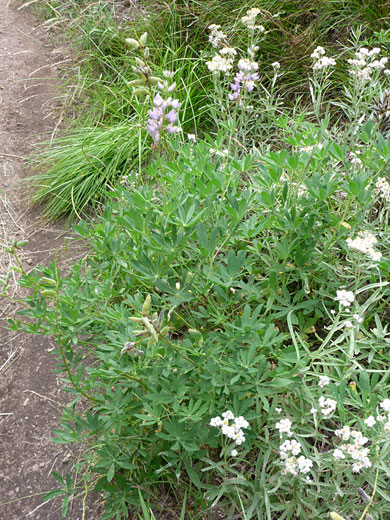Common name:
Anderson's lupine
Family:
Scientific name:
Lupinus andersonii
Main flower color:
Range:
California, west Nevada and west Oregon
Height:
Up to 2 feet
Habitat:
Dry woodland and hillsides; 5,000 to 10,000 feet
Leaves:
Divided into 6 to 9 broad leaflets, up to 2.3 inches long
Season:
June to September
Leaves of lupinus andersonii grow mostly along the stems, not at the base of the plant. They are palmately divided into relatively wide leaflets (six to nine), with hairy surfaces and edges. Leaf stalks are about the same length as the longest leaflet, around 2.3 inches. Stems grow upwards, and are also hairy.
Flowers are formed on the upper part (up to nine inches) of the stem, in an elongated cluster, and they are colored variously white, pale yellow or pale purple. The center spot on the banner petal is white, later purple. All petals are hairless. The light green seed pods are hairy, and about 1.5 inches long. Plants inhabit dry regions of California, west Nevada and southwest Oregon, at medium to high elevations.
Flowers are formed on the upper part (up to nine inches) of the stem, in an elongated cluster, and they are colored variously white, pale yellow or pale purple. The center spot on the banner petal is white, later purple. All petals are hairless. The light green seed pods are hairy, and about 1.5 inches long. Plants inhabit dry regions of California, west Nevada and southwest Oregon, at medium to high elevations.
All Contents © Copyright The American Southwest | Comments and Questions | Contribute | Site Map


